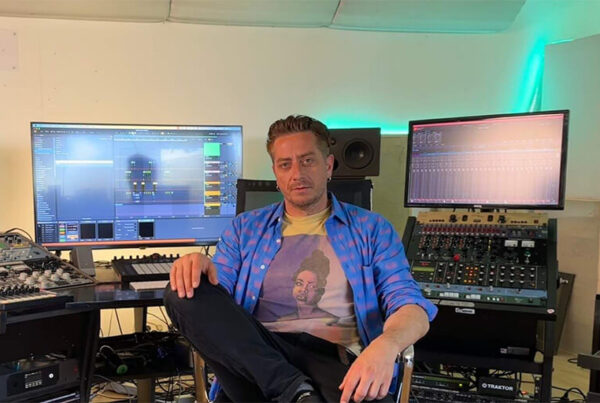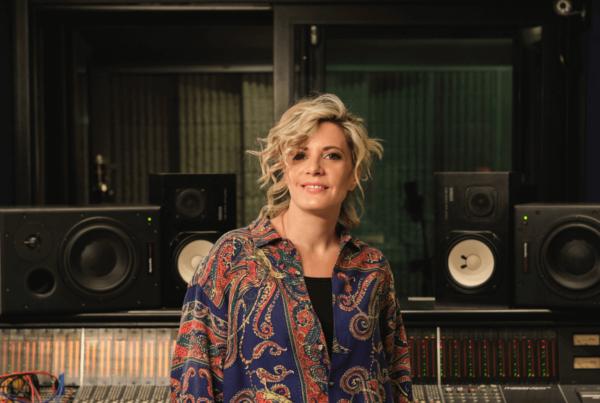Following the Music: An Interview with Singer Stephanie Forryan
Stephanie Forryan is a singer-songwriter from New England. Touring with her own music, she also works as a background singer, studio vocalist, and writer for other artists. Her work varies from day to day: sometimes she is on tour for weeks on end, sometimes she is booked in studios as a session singer or voiceover artist, and often she is recording in her own project studios, delivering backing for other peoples’ productions, creating Internet content, or producing her own albums.
How did you find your passion for music? When did you decide to turn that passion into a career?
Singing is something that always came naturally to me. As a kid, I heard Simon and Garfunkel’s song “Sound of Silence” and fell in love with harmony. As a teenager, I found an old tape deck and spent hours on end overdubbing vocals to build my voice into massive choirs. I wanted to perform, but it was hard to find people to play with regularly. So I taught myself how to play guitar. That’s when I started writing songs and playing local shows as a solo singer-songwriter. I played tiny clubs for years, following the music wherever it took me. Those opportunities eventually led to Europe, where I began playing larger shows – but I missed harmonizing. So I also started working as a backing vocalist live and in studios, soon setting up my own small studio to continue my tradition of painting vocal soundscapes.
What is your creative process like? What challenges do you face?
For me, music is all about emotional expression and connection. I think that’s why my favorite instrument is the voice – we use it to speak tender words, to shout in anger, to murmur secrets. So I am constantly trying to capture the nuances of these sounds in music. The challenge lies in capturing the fine details inherent in an expressive performance.
Usually a song idea starts with a moment that makes me want to laugh or sigh or scream, and melodies organically grow from that. When an idea hits, I turn the mic on and experiment. Sometimes I’ll sing a word or phrase, and sometimes I’ll just sing random sounds. For instance, my song “The Rain” began as I remembered a cozy gray day and started singing melodies on nonsensical syllables. The vocals wove together to become a gentle storm of “bah’s,” “ooh’s”, and “ahh’s” that mirrored that memory. Those initial recordings made it into the final production as backing vocals because they captured a unique freshness that often can’t be repeated. So I try to make sure I have immediate access to my gear whenever possible to ensure that I can capture my ideas in production quality from the start.
What are your most notable past and current projects?
My songs have been featured in commercials, independent films, network Television shows like “Lie to Me”, and on albums next to artists like Amy Winehouse and Duffy. I’ve toured in North America, Europe, Asia, and Australia as a solo artist and as a backing singer for artists like Chris Norman. And I’m currently touring with my most recent album, “Sweet Insomnia”.
How did you start using Antelope Audio gear?
When my previous audio interface stopped working, I had to look for a new solution. I decided to test the Discrete 4 and Edge emulation mic because – if it worked like I hoped – I would only have to pack one microphone when I travel instead of my normal tiny arsenal. And I ended up really enjoying the emulations. With just my computer, the Discrete 4, and the Edge microphone, I’m able to capture and deliver professional studio recordings.
What are your favorite features of the Edge mic?
The clarity of the microphone itself was a prerequisite for me liking it. But the emulations are what made it particularly useful for my purposes. My most-used emulations so far have been the Berlin 103, Berlin U87, Oxford 4038 and Tokyo 800T.
How do you feel about your current setup?
My setup is simple: microphone, audio interface, laptop, period. I like that I can just turn it on and record whenever a moment of inspiration strikes without having to worry about a complicated signal chain. And the quality of those raw tracks holds its own as production progresses and the multitracks make their way to bigger studios in later production stages.
The more I learn, the more I’m interested in exploring the technical possibilities. And as technology progresses, a lot of intriguing new options are emerging. So I am sure that my setup will continue to evolve in the future.
What are your future plans?
I’ve always followed wherever the music leads and that has served me well. This year, I’ll be working on my “Living Album Project” – an album that changes and grows over time as the audience watches the production process unfold on social media – and I’ll see where the tour plan takes me in the meanwhile.

Where can we find you?
YouTube: stephanieforryan
Instagram: @stephanieforryan
Facebook: stephanieforryanmusic
Twitter: @sforryan
TikTok: @stephanieforryan
Homepage: stephanieforryan.com





